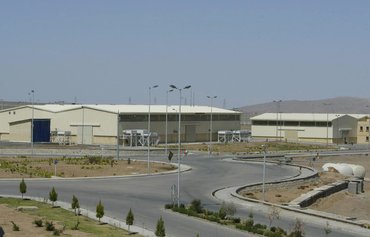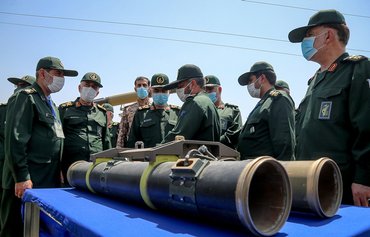A string of suspicious explosions and fires in Iran has made headlines over the past several weeks.
A series of blasts led up to the most significant: a July 2nd explosion at the Natanz nuclear complex. The incident was followed by others across the country, increasingly pointing to the possibility of sabotage.
The BBC's Persian service, which Iranian authorities consider hostile, said it received a statement "hours before" the Natanz incident from a group called the "Homeland Cheetahs" who claimed responsibility.
They claimed to be "dissidents present in Iran's security apparatus" and said the location was targeted as it was not "underground" and that therefore the alleged attack could not be denied.
Explosions rock military, nuclear sites
On June 25th, a few days before the Natanz incident, a major explosion was reported in Khojir, near Tehran. The light from the blast lit up the sky and was visible from several kilometres away.
Iranian officials cited the explosion of a natural gas tank as the reason for the Khojir blast, which they said occurred in a residential area. But multiple credible news outlets reported the blast occurred on a missile production site.
Also in late June, an explosion occurred at the Shiraz power plant, causing blackouts in half of the city. On June 29th, an explosion was reported in the well-known Parchin military complex near Tehran.
On July 4th, part of a power plant in the southern city of Ahvaz exploded, and in mid-July, media reported an explosion at the Tondgooyan petrochemical plant in southern Iran and yet another in an industrial complex near the city of Mashhad in north-eastern Iran.
Iranian officials have downplayed each of these incidents or stayed silent on potential causes. They attributed several blasts to accidents, electrical faults, or gas container explosions.
IRGC-affiliated Tasnim News described the damage incurred at the Natanz facility as "minimal".
Keyvan Khosravi, a spokesman for Iran's Supreme National Security Council, said the cause of the explosion "will be announced in due time".
Meanwhile, Behrouz Kamalvandi, spokesman for the Atomic Energy Organisation of Iran, said Iran's security officials know what caused the Natanz blast, but will not further discuss it "due to security reasons".
A history of deception
"There is no doubt the incidents were instances of sabotage," Hossein Rajabi, a Tehran-based journalist, told Diyaruna.
Several large explosions have occurred in sensitive military and security sites in Iran, he said, adding that "this is a devastating security failure for the regime and the Islamic Revolutionary Guard Corps (IRGC) in particular".
While foreign media and most of the public consider the incidents intentional, Iranian officials are not willing to provide information about the cause, said Rajabi.
Iran is using high-speed centrifuges to enrich uranium. Uranium enriched to lower levels is used in nuclear reactors, but highly enriched uranium can be fuel for an atomic bomb. Work has been underway at Natanz to build more advanced centrifuges to enrich uranium much more quickly.
The New York Times published a report on July 10th, which described the series of blasts in Iran's military and nuclear sites as expansive and long-planned.
"The Islamic republic has always ruled based on secrecy and lies," a Tehran-based political activist who spoke on condition of anonymity told Diyaruna.
The principle they rule by is to first and foremost hide the true nature of suspicious incidents that occur in Iran, he said.
The regime's propaganda machine wants to say the country is safe and secure, so it hides its own weakness and disgrace, he said. Since there is no independent and free media in Iran, criticism is not published domestically.
"This is why the public does not trust the government. The regime does not have the support of the people in any matter. After the series of explosions in Iran's military bases, most people were happy and welcomed the humiliation of the Islamic republic and its officials," he added.
Discontent with regime on the rise, says Shia scholar
Shia political scholar and former cleric Ghaith al-Tamimi said while the Iranian regime is causing a lot of problems in the region, it is facing popular discontent at home.
Iran's rulers continue to lie to their people and conceal the facts from them, he said.
Al-Tamimi told Diyaruna popular tension is mounting in Iran due to the economic hardship people are enduring. The pressure on the public, he said, is brought on by the regional expansionist policies pursued by the regime that has brought them poverty, unemployment and recession.
"Iranians are angry with their rulers for ignoring their suffering and are fed up with [the regime's empty] promises, lies, news blackout, oppression and ongoing human rights violations resulting in dissidents thrown behind bars," he said.
The Iranian people's discontent with their situation is slowly pushing the regime towards the abyss and making its demise imminent, he said.

![Image of Iran's Natanz nuclear complex after a July 2nd explosion. [Photo via Tasnim News]](/cnmi_am/images/2020/08/04/25302-Iran-Natanz-explosion-600_384.jpg)






